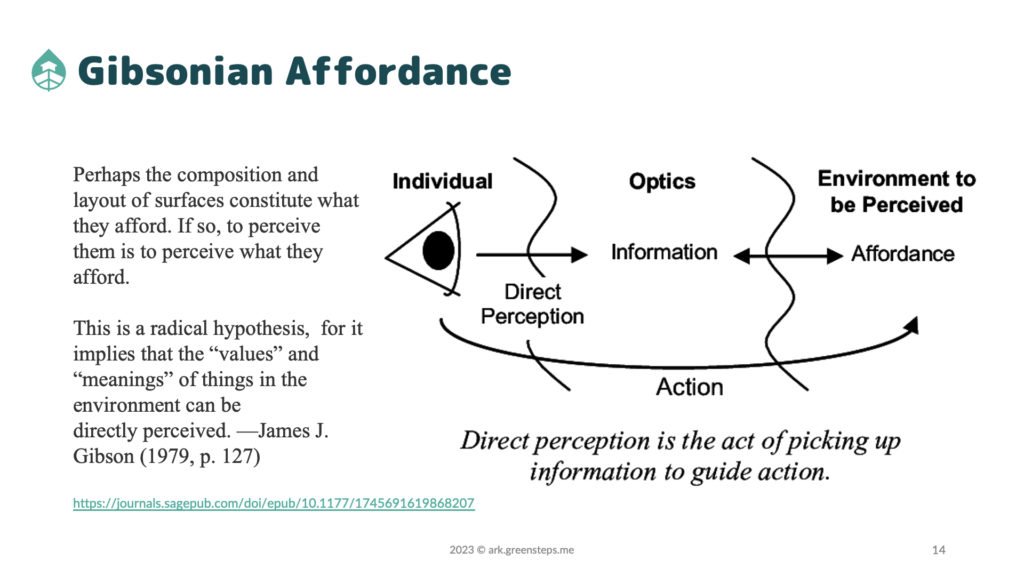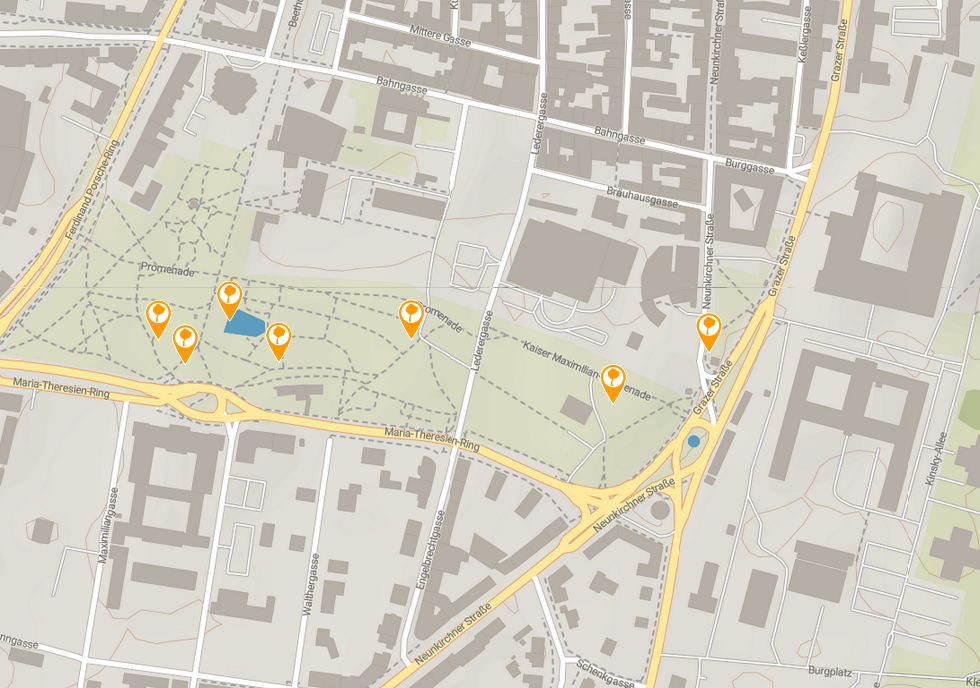
Our March crew call happened on Spring Equinox and covered a wide range of new functionalities accompanied – as always – with the pedagogical and ecological theory behind our development steps.
We introduce ecologist’s James Gibson radical 1979 hypothesis that the “value and meaning of things” in the environment can be directly perceived. He claimed that “direct perception is the act of picking up information to guide action” and described the relationship that exists between organisms and their environments. He presented the concept as “the affordances of the environment are what it offers the animal, what it provides or furnishes, either for good or ill.”

We build on Gibson’s hypothesis and assume that our modern way of life deprives us of this direct perception because we engage too much time in “indirect perception” by means of being indoors and looking at screens. Since the lack of direct perception leads to a failure of action (e.g. in properly protecting the environment), we have designed a few playful mechanisms which substitute direct perception or create additional landmark salience.

It is in particular trees which by their sheer size have always had imminent landmark salience, but which have been erased from our attention due to the acceleration and alienation of our modern way of life. Our project charges trees as cradles of life with artificial landmark salience in many ways. We engage in the decoration of trees, and where this is not allowed, we map them as elements of the Internet of Nature (IoN) and visualize the superpowers which they provide to different forms of dependent or associated organisms – including ourselves.

Access to main web-app Functionalities on landing page
Our pilot project in the small town of St. Pölten, where we merge innovative environmental education with nature protection, started with the mapping of trees, which had been declared as nature monuments by the state government. We visited 39 such trees across town and identified them as natural and in some cases also cultural landmarks which are – despite their outstanding importance – widely ignored by the local population and the local government. Even more so the more than 300 ancient trees which we found over the course of the following months. This apathy for nature monuments (IUCN cat III) as compared to national parks (IUCN cat II) has been confirmed for all of Austria and can therefore be assumed for nature at a global scale (Schmid 2014).
Mapping trees has turned into a main functionality of the web-app and supplements and in some cases substitutes commercial tree inventories which are are used by municipal governments. Contrary to tree inventories the Green Steps ARK is not only a repository of trees, but a combines the inventory with a pedagogical purpose: The app communicates ecosystem services provided by trees to their environment in a playful manner and enables all users to cluster those trees into engaging quests – with the ultimate goal of creating urban nature parks. We need to experience and protect nature in the territories which we call our home, not only in distant national parks, which we visit rarely.

Kickstarting New Commons with official Nature Monuments
Creating such urban nature parks is not a small feat. It requires the collaboration of many people who first map trees and then gamify groups of trees into guided routes or app-supported quests. It is therefore paramount to kickstart the process in new commons easily.
We have started to import official nature monuments to the ARK and therefore help Commons Mentors with their first steps. Take for example the small town of Wr. Neustadt only 50km south of Vienna, where we have recently started a new project. Instead of starting from scratch, the Commons Mentors can build on 12 existing nature monuments which already show on the commons map.

We will continue to import public data from governmental websites and aggregate information on nature monuments to build the IoN faster. The ARK will thereby gradually turn into a hub for data which helps us to protect nature and support nature education.

For more information watch the entire March crew call or jump to the sections you are interested in: https://www.youtube.com/watch?v=CCAiAytOxZE
00:00 Arrival & Quiz
01:23 Gibsonian Affordance & creating Landmark Salience
08:38 Quests without QR code (ARK Geocaching)
29:51 Landing page functionalities buttons
33:48 Kickstarting Commons with Nature Monuments
38:48 Recap
39:50 Q&A
54:38 Quiz solution & growing your Bioregional Identity